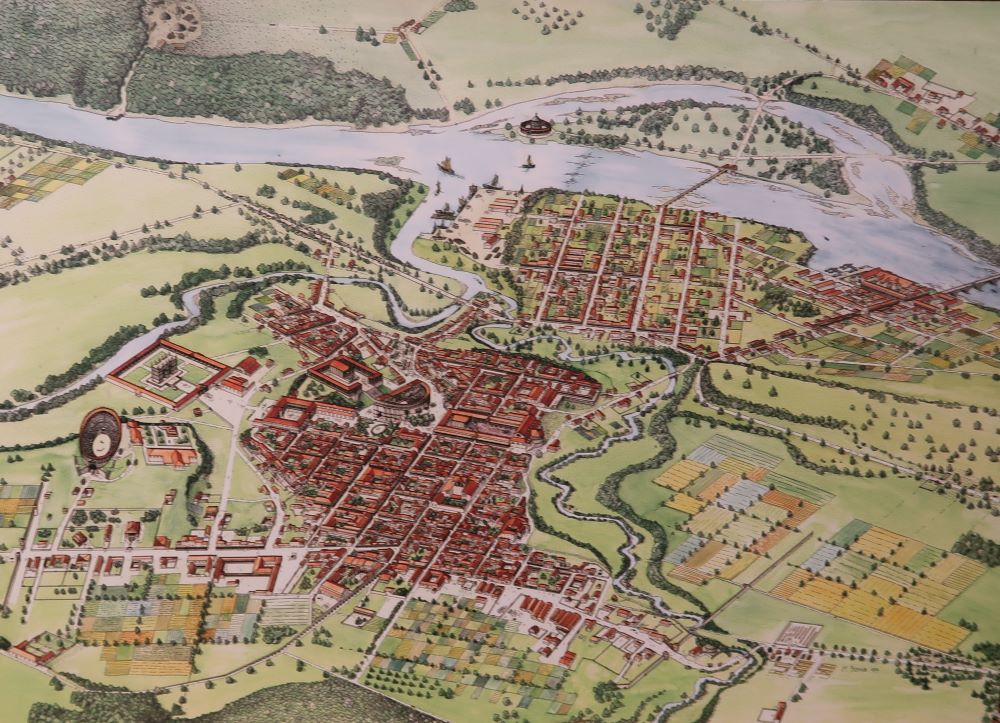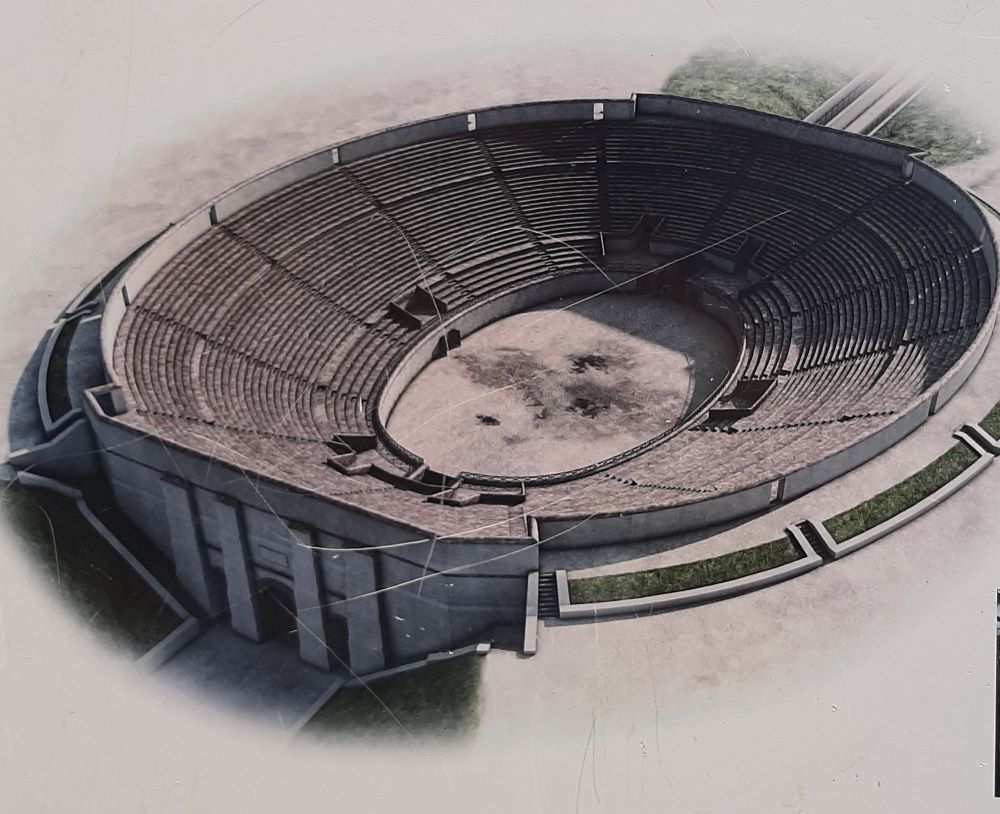Augusta Raurica Museum
22 September 2020
Before the conquest by Roman armies, the Celtic tribe of the Rauraci (Rauraken) inhabited the area. On the Münsterhügel of present-day Basel, there was a small settlement, the oppidum Basilia around 30 BC.
The Colonia Augusta Raurica was founded in 44 BC but remained small until the Roman conquest in 13-15 BC. By 30 AD, some 10,000 people were living in this Roman colony.

Augusta Raurica around 117 AD. Picture: Museum Augusta Raurica

Augusta Raurica around 240 AD. Picture: Museum Augusta Raurica


The Forum nowadays
Fifteen thousand fully Romanised Rauraci lived in this typical Roman town two hundred years later. The city was situated at the crossroads of several long-distance roads. The Rhine Harbour was a centre for trade and the storing of goods.


The theatre



Reconstruction of the Amphitheatre. Picture: Museum Augusta Raurica



Kaiseraugst, the castle (Kastell) today and around 300 B. (Picture: Museum Augusta Raurica).
A severe earthquake caused significant damage in 250. The city was destroyed by war and an Alemannic invasion around 260 BC. The castle (Kastell)was built shortly after 300. This fortress remained inhabited until the early Middle Ages, but Augusta Raurica was deserted by the sixth century. The population lived within the castle walls during the 5th-7th centuries.
In the year 1000, the settlement had only around 400 inhabitants. Basel was the new town in the region. The bishop had already moved to Basel at the end of the 5th century.
The open-air museum Augusta Raurica in Augst/Kaiseraugst and the archaeo-zoological animal park opened in the twentieth century. The Collection Centre (Sammlungszentrum Augusta Raurica) was renewed in 2022.
(Source and further information: www.augustaraurica.ch).

The St. Gallus Church

The ‘new’ church of Kaiseraugst

Kaiseraugst. Palace of the bishop, 5th century. The St. Gallus Church is just visible


Kaiseraugst, Roman thermes

The Curia (reconstruction)

Augst, Roman bath (reconstruction)

The Temple auf Schönbuhl. (Picture: Museum Augusta Raurica).

The remains of the foundations

The reconstruction of a Roman bakery inside these remains

Lapidarium

The coach (reconstruction)


Tempel complex

